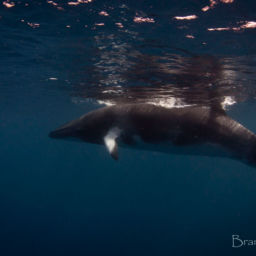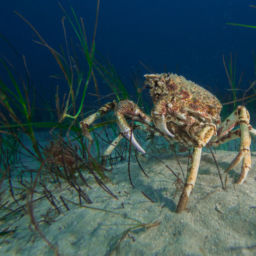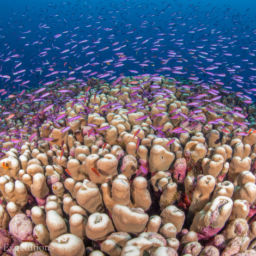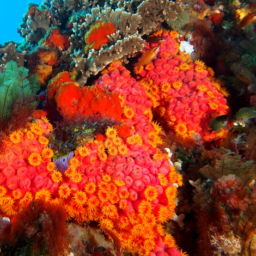An enormous, smooth, mottled gray flank slowly appears out of the blue. The minke whale cruises closer, gently rolling sideways for a better view and at the same time giving you a closer look at him. You notice the sharply pointed snout, the two blowholes, the throat grooves that reach nearly a third of his underside. It’s impressive and exhilarating, but what really strikes you is the eye. It follows you as he glides to within feet while you cling to a line of rope floating on the surface. He pauses to hover in front of you. For a moment you share something, a curiosity, a connection between human and whale.
Dwarf minke whales visit the northern Great Barrier Reef each winter. During June and early July, Mike Ball Dive Expeditions operates 3-, 4- and 7-night minke whale expeditions, offering an opportunity to swim with these incredible creatures. It’s the only known predictable aggregation of these whales in the world. Since starting minke whale expeditions in 1996, Mike Ball has had a 98 percent success rate in sightings. Every day offers a high probability of whale encounters.
Dwarf minkes grow up to 26 feet (8 m) and weigh several tons. They’re quite active and agile for whales, in many ways behaving more like dolphins. Their exceptionally inquisitive nature often results in extended interactions with boats and snorkelers. The boat finds them reliably at Lighthouse Bommie and Twin Towers on the Ribbon Reefs. But if they don’t show up there, the boat will spend up to two hours searching for whales further afield. When the boat spots whales, they’ll cut the engines and unspool two 100-foot (30 m) lines behind the boat for six to eight snorkelers to hang onto. The whales then approach, sometimes for hours at a time. The best encounters, within 10 feet (3 m), occur when swimmers are stationary in the water. Remain relatively still and calm and the whales will come near.
The Ribbon Reefs are a prized region of the Great Barrier Reef on the edge of the Continental Shelf, where nutrient-rich waters attract tons of fish. The focus is on finding and swimming with minkes, however, divers will also descend on sites buzzing with reef sharks, turtles, bigeye trevally, reef fish, sea snakes, stonefish, octopus and much more.
Research is integral to the trip, and since 1996 Mike Ball Dive Expeditions has supported researchers from James Cook University’s Minke Whale Project by having a researcher on board for each expedition. Guests can assist the research by using data-collection forms to record whale observations and by sharing their photos to the database.
Only a handful of operators are licensed to operate minke encounters, and Mike Ball Dive Expeditions has conducted more minke swims than any other company. These expeditions sell out fast so don’t delay if you’re keen to join one.


























